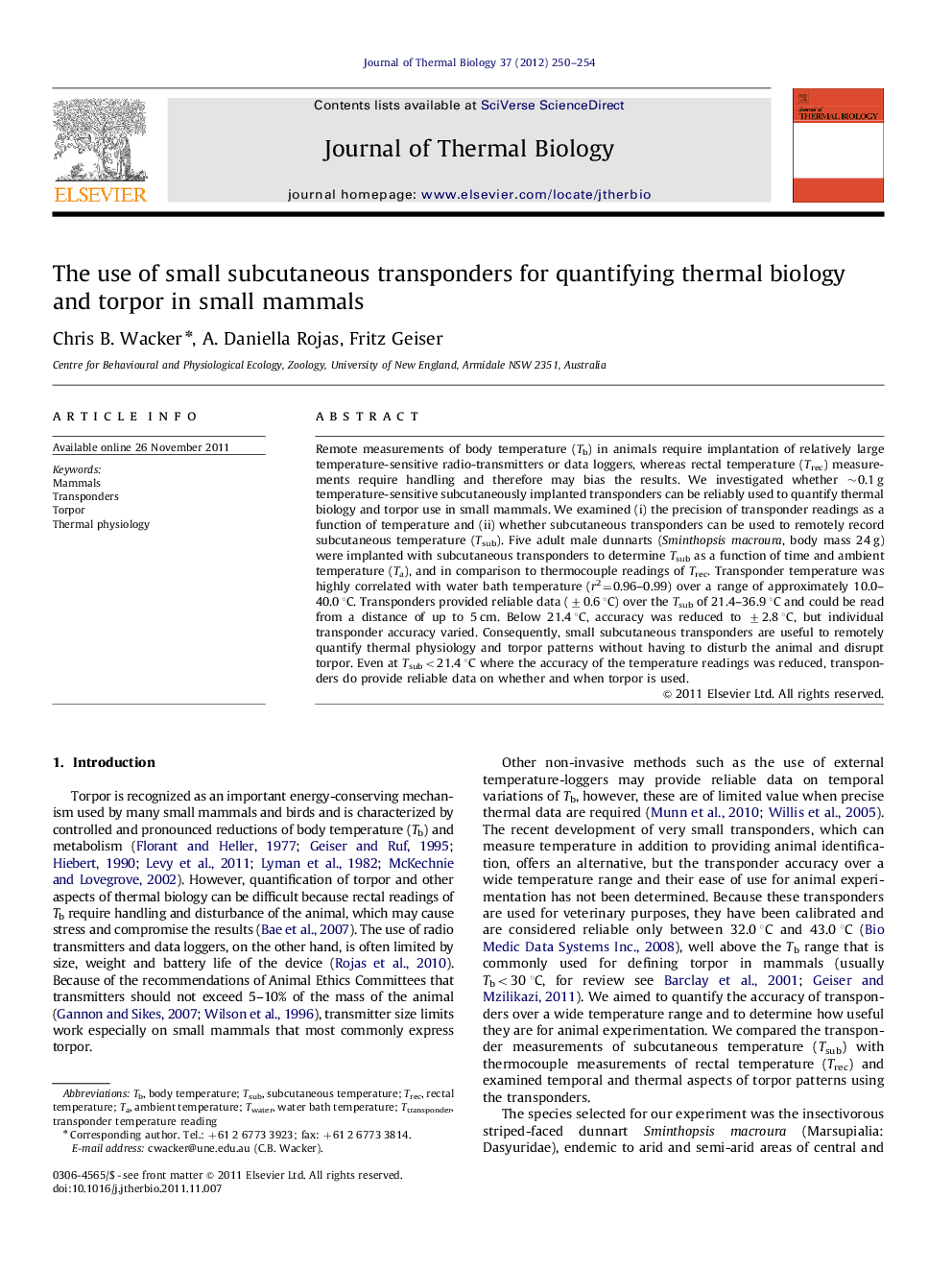| Article ID | Journal | Published Year | Pages | File Type |
|---|---|---|---|---|
| 2843285 | Journal of Thermal Biology | 2012 | 5 Pages |
Remote measurements of body temperature (Tb) in animals require implantation of relatively large temperature-sensitive radio-transmitters or data loggers, whereas rectal temperature (Trec) measurements require handling and therefore may bias the results. We investigated whether ∼0.1 g temperature-sensitive subcutaneously implanted transponders can be reliably used to quantify thermal biology and torpor use in small mammals. We examined (i) the precision of transponder readings as a function of temperature and (ii) whether subcutaneous transponders can be used to remotely record subcutaneous temperature (Tsub). Five adult male dunnarts (Sminthopsis macroura, body mass 24 g) were implanted with subcutaneous transponders to determine Tsub as a function of time and ambient temperature (Ta), and in comparison to thermocouple readings of Trec. Transponder temperature was highly correlated with water bath temperature (r2=0.96–0.99) over a range of approximately 10.0–40.0 °C. Transponders provided reliable data (±0.6 °C) over the Tsub of 21.4–36.9 °C and could be read from a distance of up to 5 cm. Below 21.4 °C, accuracy was reduced to ±2.8 °C, but individual transponder accuracy varied. Consequently, small subcutaneous transponders are useful to remotely quantify thermal physiology and torpor patterns without having to disturb the animal and disrupt torpor. Even at Tsub<21.4 °C where the accuracy of the temperature readings was reduced, transponders do provide reliable data on whether and when torpor is used.
